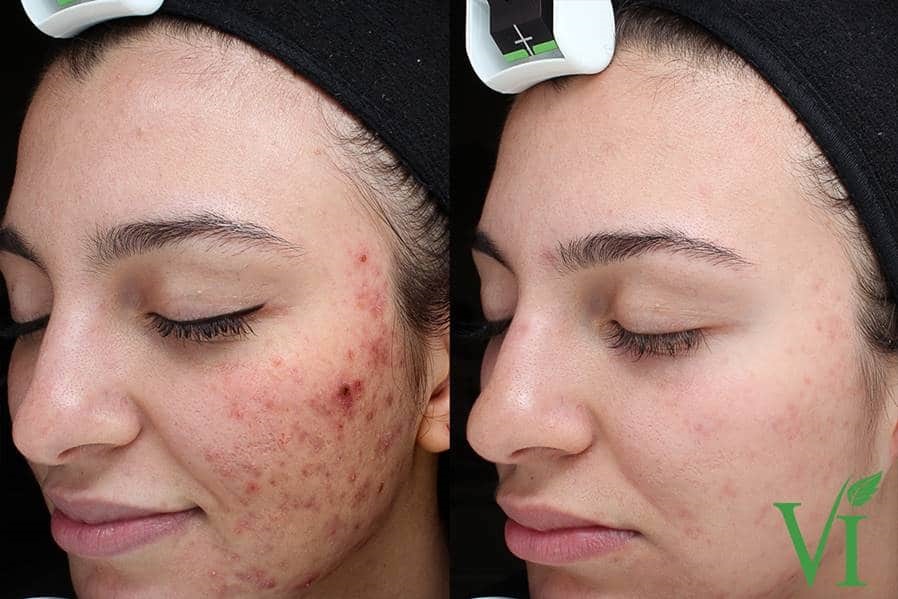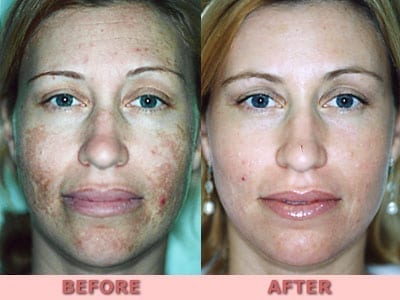Chemical Peels
Sometimes it helps to give natural processes a little boost. Human skin is continually exfoliating, shedding dead cells and replacing them. But it doesn’t always do so as fast as we’d like. That’s when treatments such as chemical peels can accelerate the process.
Periodic peeling of the skin helps stimulate cellular activity and can be used for addressing a variety of skin issues: from age spots to acne, enlarged pores to pre-cancerous growths. At Suddenly Slimmer Med Spa we offer chemical peels that exfoliate either lightly, moderately, or aggressively depending on the chemical used.
How do I get started today with a chemical peel?
If you’re unhappy with the tone and texture of your skin, there’s finally a solution that can help. Suddenly Slimmer Med Spa’s licensed, professional skincare specialists are internationally renowned experts in medical aesthetics with a specialty in chemical peels. Contact us online today or call 602-952-8446 to schedule a complimentary consultation to learn more about the different types of chemical peels and how Suddenly Slimmer Med Spa’s skin care experts can create a customized treatment plan for you.

What Is a Chemical Peel?
Most people don’t think of their skin as an organ, but it is, the largest organ of the human body. Our skin is comprised of three layers: the epidermis, the dermis, and the fat layer. Chemical peels primarily deal with the epidermis, blistering the upper layer, but can also penetrate the dermis layer. The surface skin loosens and eventually peels off, allowing new, unblemished skin to take the place of the older, dead, and damaged cells. Chemical peels are an easy, non-invasive option for skin rejuvenation. Cleopatra was one of the earliest proponents of chemical peels. She used sour milk, which contains lactic acid, as the peeling agent. Romans also used the tartaric acid found in grapes.
What Skin Problems Can Chemical Peels Treat?
Chemical peels do not address deep facial lines and they cannot tighten loose sagging skin. But they are excellent for these skin conditions:
- Sun damage
- Fine lines and wrinkles
- Texture issues
- Pigmentation problems
- Age spots
- Acne and acne scars
- Freckles
- Scaly patches
Types of Chemical Peels
At Suddenly Slimmer Med Spa we offer three different types of chemical peels including:
Light Chemical Peels
A light chemical peel makes use of glycolic acid or salicylic acid and is the mildest form of the treatment.
What Issues Can A Light Chemical Peel Treat?
Superficial chemical peels are excellent for exfoliating the outermost layer of the epidermis, removing dead and damaged skin cells, and refreshing the skin’s glow. We use light peels for the following:
- Dry skin
- Fine wrinkles
- Improve acne
What Chemicals Are Used In A Light Chemical Peel?
We usually use naturally derived alpha hydroxy acids for these peels: glycolic acid (derived from sugar cane, grapes, or sugar beets), lactic acid (derived from sour milk), or salicylic acid (derived from plants).
Light Chemical Peel Recovery
After your first few light peels, your skin may have some redness and irritation, but as your skin becomes more exfoliated this will pass and your skin will simply glow after your peel. Because of its mildness, a light chemical peel can be administered to the patient once a week for up to six weeks, depending on the results that they want to achieve.
Medium Chemical Peels
A medium chemical peel not only removes skin from the outermost layer but also from portions of the upper part of the middle layer of the skin or the dermis. For this purpose, trichloroacetic acid may be used in combination with glycolic acid.
What Issues Can A Medium Chemical Peel Treat?
Medium-depth peels penetrate more deeply, into the dermis layer. We use them to treat the following:
- Acne scars
- Deeper wrinkles
- Uneven pigmentation
Medium Chemical Peel Recovery
The peeling agent is trichloroacetic acid. Medium peels will require some recovery time, as they leave the skin red and stinging. There will be some crusting, and the redness can linger for up to a few weeks. Medium peels can be repeated, but not more than three or four times per year.
Deep Chemical Peels
These are the most aggressive chemical peels using phenol acid as the peeling agent.
What Issues Can A Deep Chemical Peel Treat?
Deep peels penetrate into the lower dermal layer and can address the following:
- Deeper wrinkles
- Sun damage
- Pre-cancerous growths
- Blotchy skin
- Scars
Preparing For A Deep Chemical Peel
Prior to receiving a deep peel, patients first do some pre-treatment at home to prepare their skin for the procedure. Immediately before the peel, the patient will receive a local anesthetic, to help manage any discomfort.
Deep Chemical Peel Recovery
Deep chemical peels are an aggressive skin treatment and require recovery time. The patient will have peeling, crusting, swelling, and redness for several days after the peel. Redness can remain for up to three months, and the use of sunscreen is paramount, as your skin will be very fragile.
How Often Can I Have A Deep Chemical Peel?
Due to their aggressiveness, deep chemical peels can be done no more than once per decade.
How Does A Chemical Peel Work?
During the procedure, the doctor usually uses a cotton-tipped applicator to apply the chemical solution onto the patient’s skin. As the chemical reagents come in contact with the skin, they will begin to change color as the solution facilitates the peeling process.
How Long Do Chemical Peels Take?
Light chemical peels may take up to 10 minutes; medium chemical peels 20 minutes, and deep chemical peels anywhere between 30 minutes to complete.
Can Chemical Peels Be Performed With Other Treatments?
At Suddenly Slimmer Med Spa Phoenix, we can also enhance the results of your chemical peel with Vivace RF MicroNeedling, CO2 Laser Skin Resurfacing, IPL PhotoFacial to help with age spots, overall skin rejuvenation, and to help tighten the skin, or with Dermal Fillers or Botox. A thorough skin evaluation by one of our licensed skincare experts will help determine what best meets your needs.






